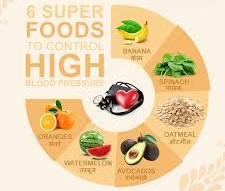High blood pressure, or hypertension, is a common health condition affecting millions of people worldwide. Ayurvedic lifestyle changes offer natural and holistic methods to manage high blood pressure effectively. This post explores Ayurvedic Approaches, including diet adjustments, stress management, and herbal remedies, to help you maintain healthy blood pressure.
Understanding High Blood Pressure in Ayurveda
According to Ayurveda, high blood pressure can result from an imbalance in the doshas, particularly Pitta and Vata doshas. When these energies are out of balance, it can lead to physical and mental stress, contributing to high blood pressure. Ayurvedic lifestyle changes can help restore balance and lower blood pressure naturally.
Ayurvedic Diet for High Blood Pressure
Foods to Include
An Ayurvedic diet for high blood pressure emphasizes foods that are cooling, nourishing, and easy to digest. Consider incorporating the following:
- Leafy Greens: Spinach, kale, and other greens are rich in potassium, which helps regulate blood pressure.
- Whole Grains: Oats, quinoa, and barley provide sustained energy and are less likely to aggravate Pitta.
- Fruits: Apples, pears, and melons have a cooling effect, beneficial for high Pitta and Vata doshas.
Foods to Avoid
To maintain balanced blood pressure, it is best to avoid:
- Salty and Spicy Foods: These can increase Pitta and aggravate hypertension.
- Processed Foods: Packaged foods often contain preservatives and excess sodium.
- Caffeine and Alcohol: These can elevate stress levels, leading to higher blood pressure.

Ayurvedic Herbal Remedies for Blood Pressure
Ayurvedic herbs play a significant role in naturally managing high blood pressure. Here are a few beneficial herbs:
- Ashwagandha: Known for its adaptogenic properties, it helps manage stress and supports heart health.
- Arjuna: This herb strengthens the heart muscles and supports healthy blood pressure.
- Brahmi: A calming herb that helps reduce anxiety, promoting a sense of calm.
Always consult with an Ayurvedic practitioner before starting any new herbs.
Stress Management Techniques
Stress is a leading contributor to high blood pressure. Ayurveda emphasizes mind-body practices to reduce stress effectively.
Pranayama (Breathing Exercises)
Anulom Vilom and Bhramari are excellent pranayama exercises for calming the mind and controlling blood pressure.
Yoga for Blood Pressure
Certain yoga postures like Sukhasana (Easy Pose) and Balasana (Child’s Pose) are gentle, calming, and help reduce hypertension naturally.
Ayurvedic Lifestyle Tips for Managing Blood Pressure
In addition to diet and stress management, these lifestyle practices can help keep your blood pressure in check: How to incorporate ayurveda in modern life learn here.
- Adequate Sleep: Aim for 7-8 hours to avoid aggravating Vata dosha.
- Regular Exercise: Choose gentle exercises like walking or yoga to keep Pitta and Vata balanced.
- Daily Routine: Following a consistent daily routine can help maintain dosha balance, supporting stable blood pressure.
Conclusion
“Managing high blood pressure is achievable with the holistic approach of Ayurveda. By following an Ayurvedic diet, using herbal remedies, practicing stress management, and adopting a balanced lifestyle, you can effectively control hypertension and live a healthier life. Start implementing these Ayurvedic changes today for a peaceful mind and healthy heart. For more information on hypertension, you can refer to trusted resources like the National Institutes of Health (NIH) or the World Health Organization (WHO).”

[…] 🔗 Read more about Ayurvedic remedies for joint pain »🔗 Explore Ayurvedic treatment for blood pressure » […]